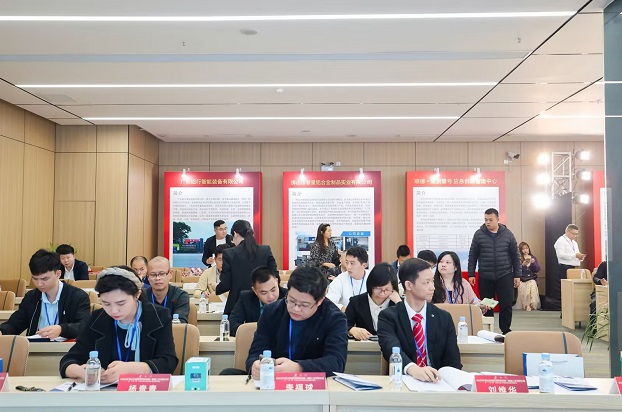The use of ultrasound to degrade chemical pollutants in water, especially recalcitrant organic pollutants, is a new type of water treatment technology developed in recent years. It combines the characteristics of advanced oxidation technology, incineration, supercritical water oxidation and other water treatment technologies, and has the characteristics of mild reaction conditions, fast speed, and wide applicability. It can be used alone or in combination with other technologies, and has great development potential. Ultrasonic waves can cause cavitation effects in water, generating instantaneous local high temperature and high pressure environments (hotspots) of about 4000K and 100Mpa, while generating shock waves of micro jets with strong impact force at a speed of about 110m/s. Water molecules reach a supercritical state at hotspots and decompose into hydroxyl radicals, superoxide radicals, etc. Among them, hydroxyl radicals are the strong oxidants discovered so far. Organic compounds undergo reactions such as chemical bond breakage, aqueous phase combustion, high-temperature decomposition, supercritical water oxidation, and free radical oxidation in hot spots. These effects, combined with particle vibrations and secondary derivative waves in the sound field, provide multiple pathways for the degradation of organic compounds that are difficult to achieve by other methods.
1. Dynamics Study on Ultrasonic Degradation of Organic Compounds
The ultrasonic degradation process of organic compounds follows a first-order reaction kinetics law. The enormous energy released during the instantaneous collapse of a cavitation bubble is the main force that triggers the sonochemical reaction. The mechanical and chemical effects produced by the collapse of the cavitation bubble react in three different spaces, namely the interior of the cavitation bubble. At this time, the cavitation bubble itself is like a high-temperature and high-pressure reactor; The gas (vapor) liquid interface adjacent to the cavitation bubble wall; In areas further away from the interface and in the main solution phase, organic matter will be subjected to shock waves and reactive free radicals that diffuse with the shock waves.
2. The influencing factors of ultrasonic degradation of high concentration organic wastewater
(1) Ultrasonic power
Under the action of ultrasound, the degradation of organic matter usually follows a first-order kinetic reaction. The rate of ultrasonic degradation reaction generally increases with the increase of sound intensity, but excessive intensity can have the opposite effect. Due to the high sound energy, cavitation bubbles will grow significantly under the negative pressure of sound waves, forming a barrier that reduces the available sound energy of the system, resulting in a decrease in degradation rate.
(2) Ultrasonic frequency
Research has shown that high-frequency ultrasound can help improve the degradation rate of ultrasound, as the yield of hydroxyl radicals increases with the increase of sound frequency. In fact, there is a good match between ultrasound intensity and frequency in the process of ultrasound degradation, and the choice of frequency is related to the structure, properties, and degradation process of the degraded organic matter. Not all cases are conducive to degradation with high-frequency ultrasound.
(3) Dissolved gases in wastewater
There are two main reasons for the influence of dissolved gases on the rate and degree of ultrasonic degradation: firstly, dissolved gases have a significant impact on the properties and intensity of cavitation bubbles; In addition, free radicals generated by dissolved gases such as N2 and O2 also participate in the degradation reaction process, thus affecting the reaction mechanism and thermodynamic and kinetic behavior of the degradation reaction. The high temperature and pressure generated by ultrasonic cavitation always increase with the increase of adiabatic index r. For a single atom gas, r=1.666, while the adiabatic index of a polyatomic gas (such as air, water vapor, or organic vapor inside a bubble) is always lower than that of a single atom gas, for example, r=1.33 from a saturated aqueous solution. It can be seen that in the process of ultrasonic degradation, the use of single atom rare gases can always improve the rate and degree of degradation.
(4) Nature of wastewater
The properties of liquids such as solution viscosity, surface tension, pH, and salt effect can all affect the ultrasonic cavitation effect of solutions. The influence of solution viscosity on cavitation effect is mainly manifested in two aspects: on the one hand, it can affect the cavitation threshold, and on the other hand, it can absorb sound energy. Of course, as the viscosity of the solution increases, the viscosity loss and attenuation of sound energy in the solution intensify, and the effective sound energy in the radiation solution decreases, resulting in a significant increase in cavitation threshold. It becomes difficult for the solution to undergo cavitation, and the cavitation intensity weakens. Therefore, a low viscosity is conducive to ultrasonic degradation. With the increase of surface tension, it is difficult to generate cavitation nuclei, but the limit temperature and pressure generated when cavitation bubbles collapse increase, which is conducive to ultrasonic degradation. When there is a small amount of surfactant in the solution, the surface tension of the solution drops rapidly, and a large number of foam is generated under the action of ultrasound, but the power generated when the cavitation bubble collapses is very small, so it is not conducive to ultrasonic degradation.
(5) Reaction temperature
Temperature has a significant impact on the intensity and dynamic process of ultrasonic cavitation, leading to changes in the rate and process of ultrasonic degradation. An increase in temperature can lead to a decrease in gas solubility, a decrease in surface tension, and an increase in saturated vapor pressure, which are detrimental to ultrasonic cavitation. The general biochemical efficiency decreases exponentially with the increase of temperature, therefore, the sonochemical process is more favorable at low temperature (20 ℃), and ultrasonic degradation is generally carried out at room temperature.
Disclaimer:The authenticity of this information has not been verified by our website and is for your reference only. The purpose is to convey more information; If there is any error, error, or infringement, please contact us via email( chinavta@szxwds.com )We would greatly appreciate it if you could promptly notify us of the error, error, or infringement, and we will promptly make corrections or deletions.



